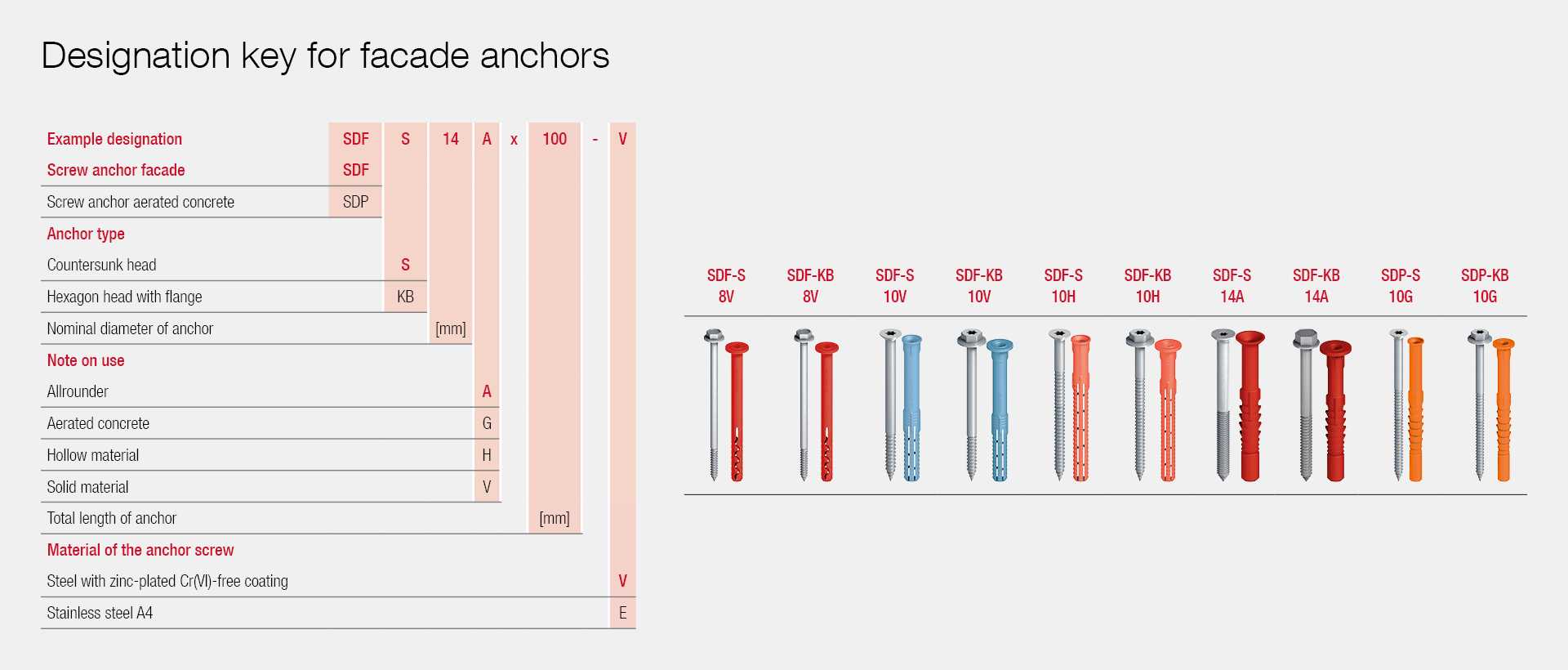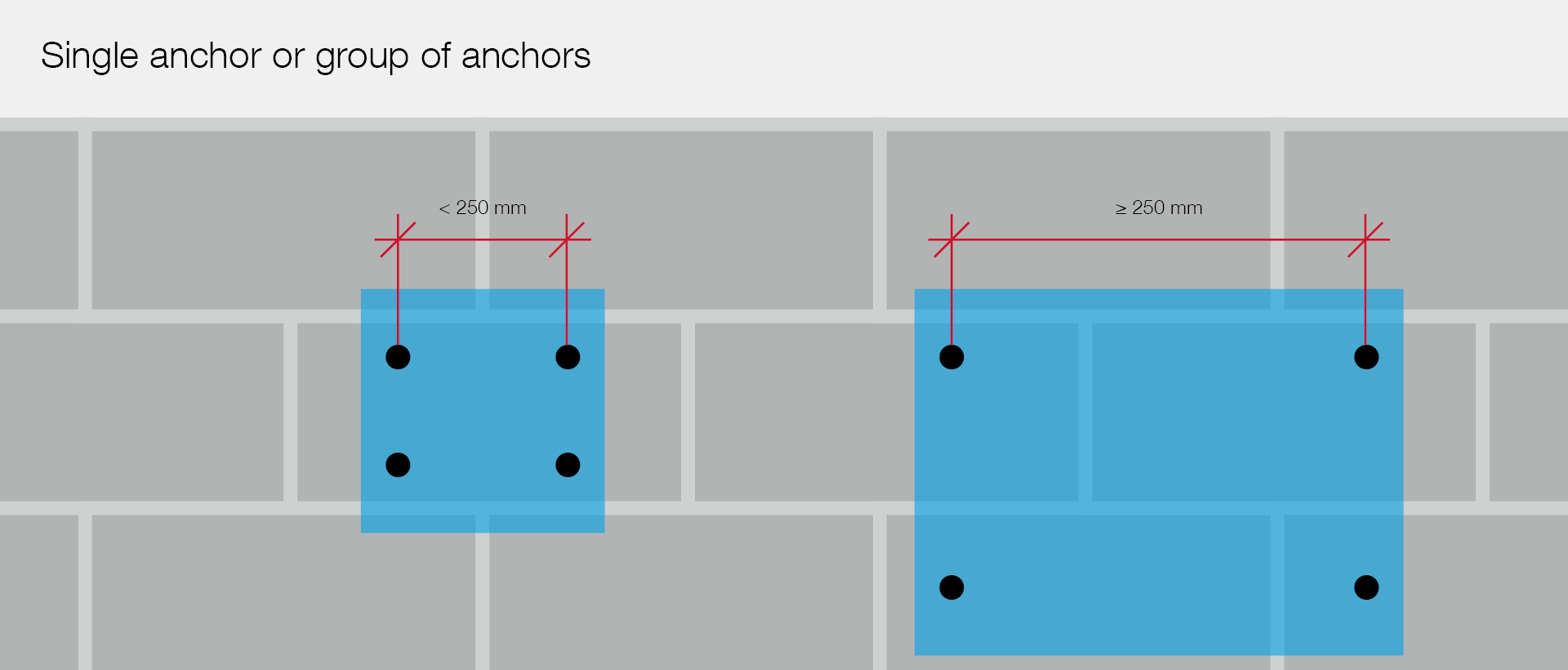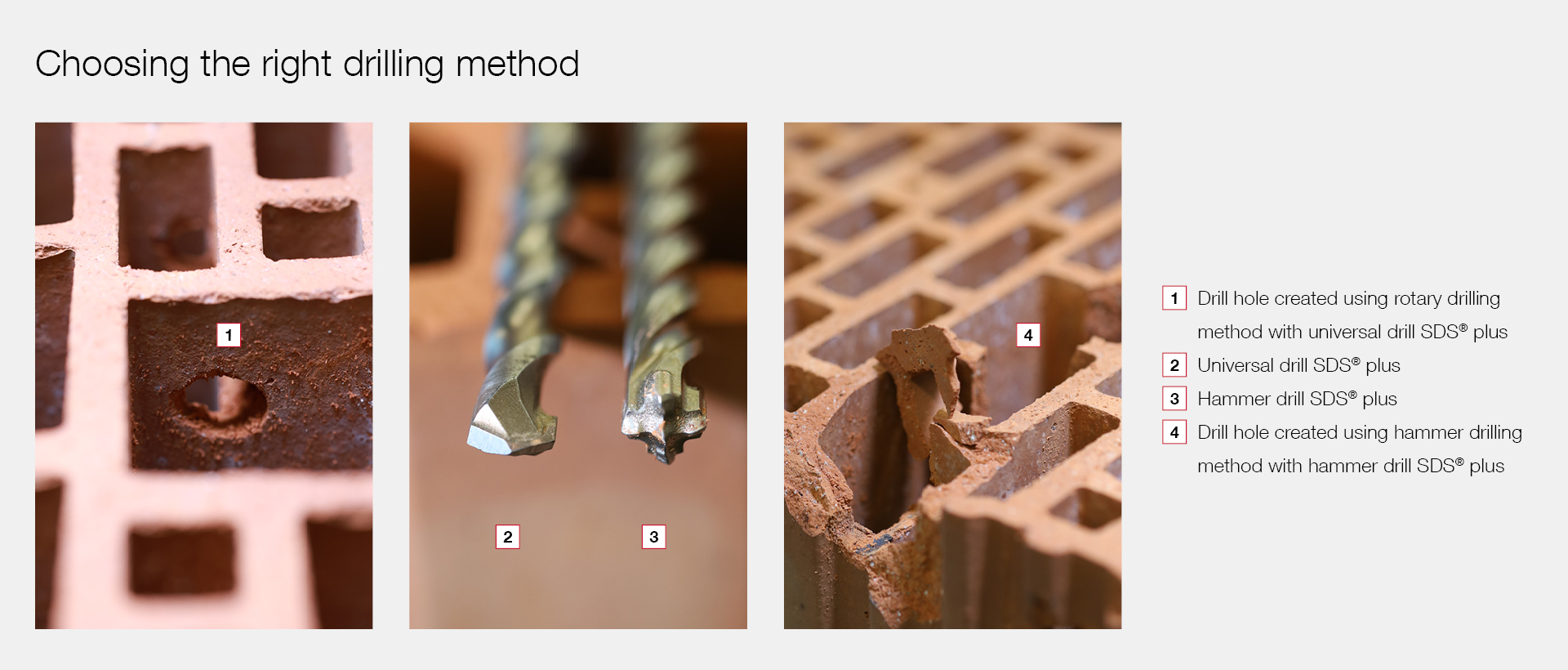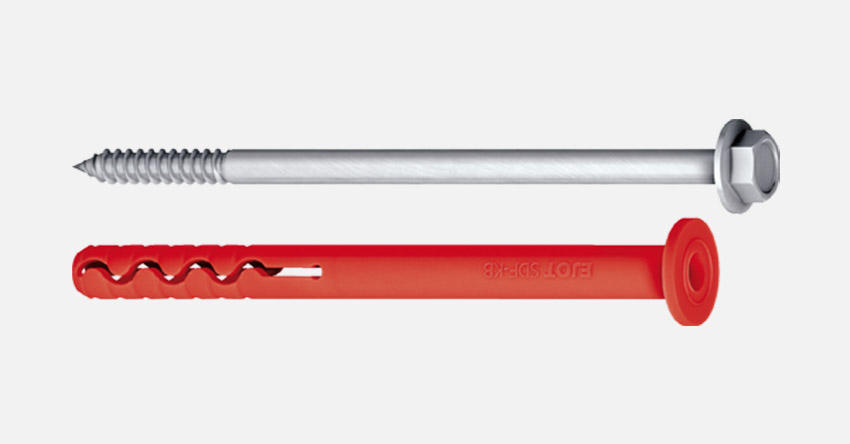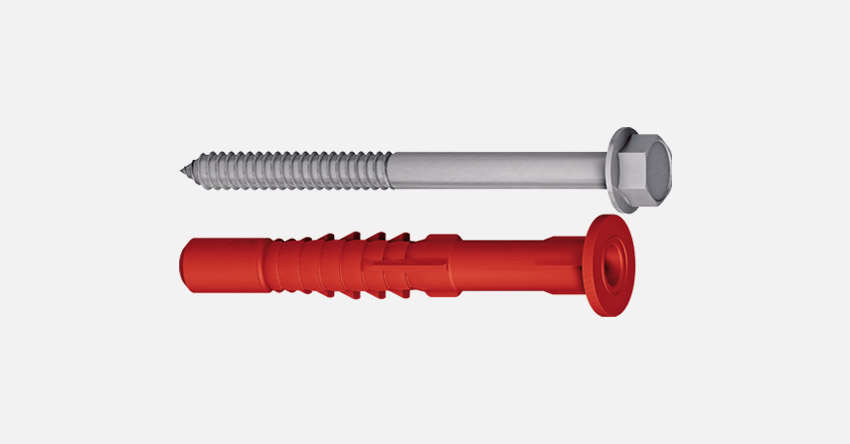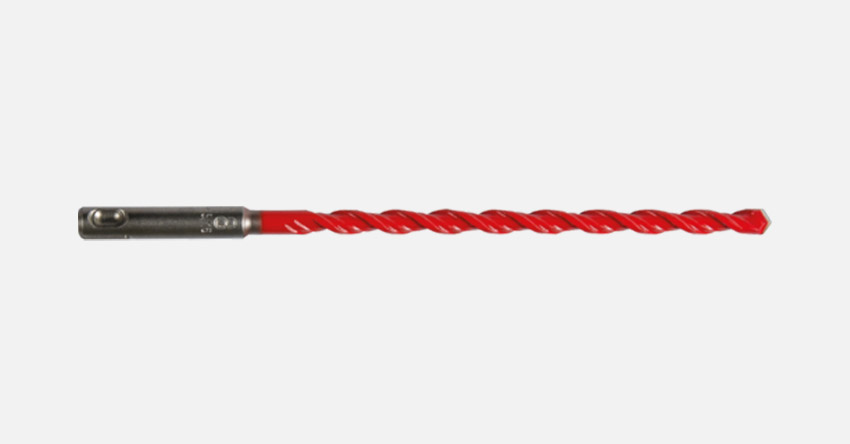Correctly inserting plastic facade anchors
Guide for rainscreen facades – Part 4
Our guidebook on rainscreen facades has already discussed the structure, the advantages of a rainscreen facade, the basics of embedment mechanisms, as well as the characteristics and special features of single or multiple fastening of non-load-bearing systems.
The current part of our guidebook on rainscreen facades deals with the correct selection and installation of plastic facade anchors.
The current part of our guidebook on rainscreen facades deals with the correct selection and installation of plastic facade anchors.
For better differentiation, all EJOT anchors are coloured differently depending on the diameter and substrate of the setting area. This speeds up the correct selection and helps to avoid mistakes during installation.
The product key of the EJOT plastic anchor consists of the following components:
Based on the details of the total length and the details about the installation depth of the anchor in the substrate, the so-called grip length can be easily calculated. For example, the red anchor, SDF-8V, has an installation depth in the substrate of 50 mm. These details are listed in the ETA of an anchor. If the anchor has a total length of 80 mm, an attachment with a maximum thickness of 30 mm can be fastened.
The EJOT plastic anchor, which is approved in Europe, is therefore always sold as a unit. To determine the necessary anchor length, it is important to know the thickness of the attachment to be fastened, and the thickness of the non-load-bearing layer. Non-bearing layers could be, for example, render or an external thermal insulation composite system. Together, these two thicknesses give us the required clamping length. If you add the grip length and the installation depth together you get the total length. The installation depth is marked on each anchor sleeve with a ring that runs all the way around it.
- SDF stands for Schraub Dübel Fassade (screw anchor facade)
- The initials of the head style: S for the countersunk head and KB for the collar head with collar
- Nominal diameter of the anchor in millimetres, which also corresponds to the pre-drilled diameter. The following letter helps us to distinguish the anchors with the same diameter. For instance, the SDF-10V was designed for solid building materials (V) and the SDF-10H for hollow building materials (H).
- Details of the total length of the anchor
- Details of the material of the anchor screw. A V stands for zinc-coated steel screws (V), while an E stands for a screw made of A4 stainless steel.
Based on the details of the total length and the details about the installation depth of the anchor in the substrate, the so-called grip length can be easily calculated. For example, the red anchor, SDF-8V, has an installation depth in the substrate of 50 mm. These details are listed in the ETA of an anchor. If the anchor has a total length of 80 mm, an attachment with a maximum thickness of 30 mm can be fastened.
Push through vs. pre-positioned installation
All fastenings are designed as push through installations as per EAD 330284-00-0604. For this purpose, the anchor sleeve is inserted through the pre-punched attachment, for example the rainscreen facade wall bracket, and the screw is then tightened until it comes into contact with the anchor sleeve. The clearance hole diameter of the attachment is listed in the key assembly values of the corresponding ETA. Push through installation is characterised, in particular, by the anchor sleeve and the associated screw being precisely reconciled to each other. This reconciling together with the defined installation situation guarantees a reproducible expansion behaviour of the anchor. In addition, during the push through installation you can actually see whether the sleeve in the substrate is also turning while tightening the anchor screw. With so-called pre-installation, which is popular on the construction market, this is not possible. In the construction segment, anchor sleeves and screws are sold individually, and it is down to the customer which combination of sleeve and screw they use for a unit, which leads to a non-reproducible installation situation.The EJOT plastic anchor, which is approved in Europe, is therefore always sold as a unit. To determine the necessary anchor length, it is important to know the thickness of the attachment to be fastened, and the thickness of the non-load-bearing layer. Non-bearing layers could be, for example, render or an external thermal insulation composite system. Together, these two thicknesses give us the required clamping length. If you add the grip length and the installation depth together you get the total length. The installation depth is marked on each anchor sleeve with a ring that runs all the way around it.
Single anchor or anchor group
When using plastic anchors in masonry, the spacing between the anchors is of vital importance. If the centre distance between two anchors is less than 250 millimetres, it is deemed to be an anchor group. For anchor groups, only the load-bearing capacity of an individual anchor can be set. This regulation was created in order to exclude the extraction of stones from the masonry by excessive loads in a single stone. To be able to stress each anchor with its full characteristic load-bearing capacity, the anchors must have spacing between each other of at least 250 mm. This ensures that the anchors can be embedded in different bricks.The visibility of the joints is of decisive importance for anchoring in the masonry. If, for example, this is no longer possible due to a plaster layer or a heat insulation composite system, the load-carrying capacity must be reduced by 50%.
Choosing the right drilling method
For each type of stone, a drilling process is specified by the approval. This is of vital importance to achieve the pull-out load capacity. In most perforated bricks and in aerated concrete, the drill holes must be created in a rotary drilling process. With hammer drilling, the percussion would puncture each ledge and create a tapered broken-out area. This drastically reduces the frictional connection in the substrate, and therefore also the load-bearing capacity. In general, if the stone type if unknown, we always recommend rotary drilling first. If the substrate cannot be drilled in a satisfactory way, you can switch to hammer drilling.The next part of our guidebook on rainscreen facades deals with anchoring by means of through bolts and with injection mortar.

